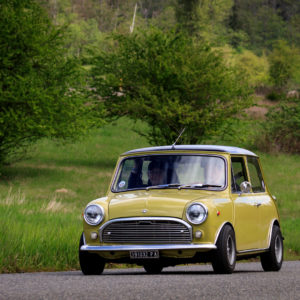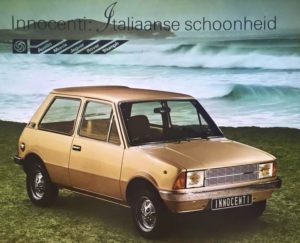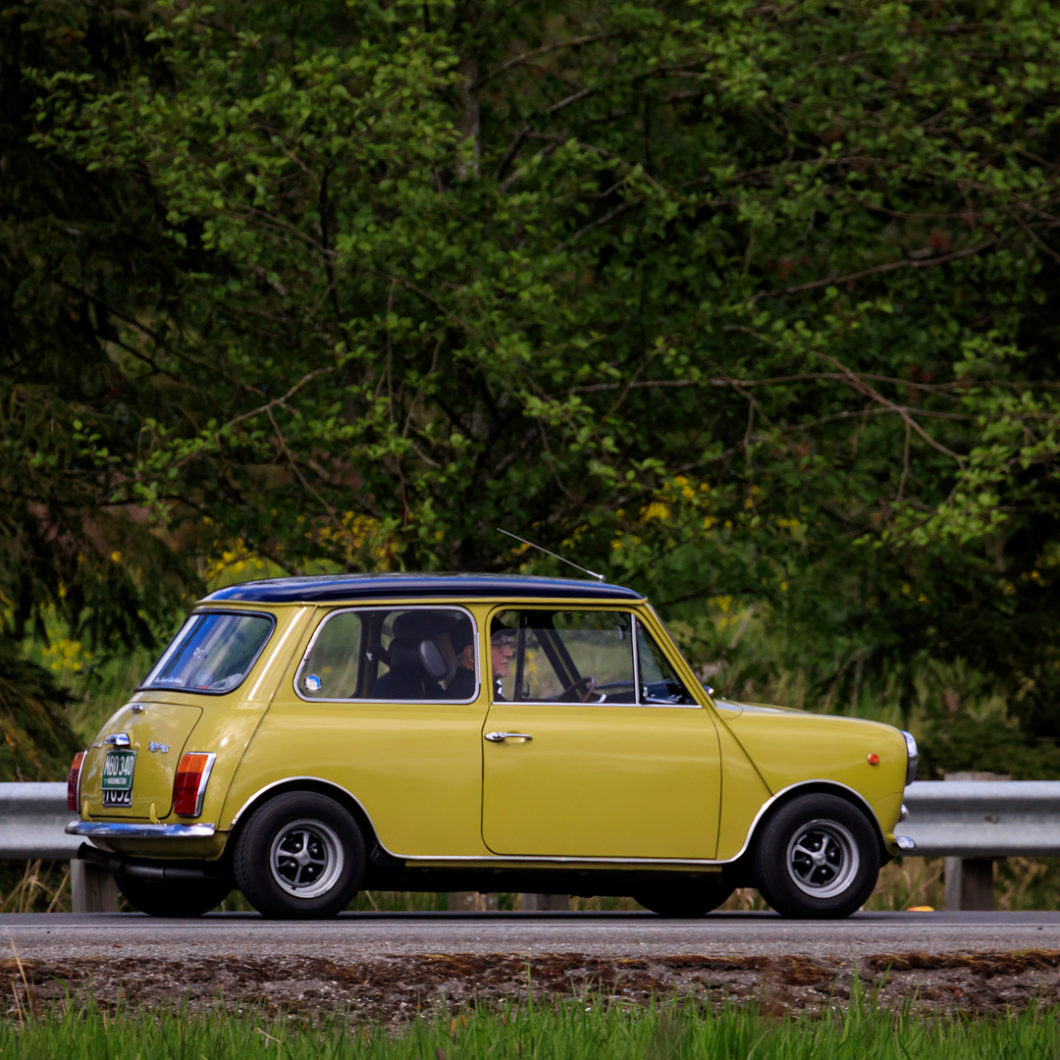The Minis blasting through Turin’s streets in The Italian Job were from BMC (who reportedly supplied only the bare minimum, so the production had to buy more) and shipped in from the U.K.; but Italy had its own Mini – literally – because that process was so expensive.
Huge tariffs made imported cars very expensive in Italy after WW2, and as in many countries the solution to that was to build them in country.
Ferdinando Innocenti
BMC was keen to get a foothold in Italy and in August, 1959, teamed up with Ferdinando Innocenti, whose company made the famous Lambretta scooter and many derivatives thereof, for local production. Innocenti was only one of many BMC/British Leyland local partners over the years, but its cars were some of the very best, sometimes improving on BMC’s originals.
The first cars Innocenti built for BMC were Austin A40s, at first CKD kits and then full production. Ferdinando Innocenti had always wanted to build cars and, armed with decades of manufacturing expertise and a modern, well-run assembly facility, his factory paid particular attention quality as a result. A40s from Milan were often better made than their Longbridge equivalents.
Innocenti also sometimes changed things to add functionality – at the end of 1962, Innocenti’s A40 got a proper hatchback instead of the old split tailgate of the A40 estate – a groundbreaking feature at the time.
The company also produced a Ghia-bodied version of the Sprite, the Innocenti 950/1100 Spider and C Coupe, but volume production was of BMC/BL’s mainstream cars like the 1100/1300 ADO16.
The Innocenti Mini
The most famous and popular Innocenti of all, however, was the Italian company’s version of the Mini.
Designed in part as a response to cars like the Fiat 600 and to “wipe smaller cars like the Vespa 400 and Messerschmidt off the road,” the Mini was perfect for Italian tastes, but production at Innocenti did not begin until the fall of 1965.

At 860K Lire, the initial Innocenti Mini 850 was pricey, but buyers in Italy liked it and as with the A40, quality was very good. In time, Innocenti offered faster, larger-engined versions derived from their British counterparts. Sometimes these cars had slightly different specs and names – Innocenti’s Mini 1001 was just like a Mini 1000 from Longbridge, but with more things – like proper vent windows.
Innocenti Mini sales were strong from the start, though the company lost some direction after Ferdinando’s passing in 1966 and ended up being bought by British Leyland in 1972.
British Leyland Buys Innocenti
The BL era at Innocenti consisted of funding an updated shell for the Mini with a body by Bertone, an insightful look at Innocenti’s manufacturing processes, and export of the Innocentis to other LHD markets where they did quite well. At one point, Innocenti CKDs were assembled in Belgium.
The Bertone-bodied car was a project Innocenti had wanted to execute since the appearance of the Autobianchi A112 in 1969 – an imitator with some newer technology which took a bite out of Mini sales.
The “New Mini” was finally realized under BL’s ownership and the direction of Geoffrey Robinson, who would later run Jaguar, but with BL in crisis at home, the company was unable to capitalize on Innocenti’s new designs or good practices, selling off the company to Alejandro De Tomaso in 1975.
The Bertone-styled car went on to a long and successful life (1974-1993) under DeTomaso and even survived into the era of Fiat ownership of the company, but it was not part of the BL universe. At least, not in the same way.

Innocenti’s “new Mini” remained available through British Leyland’s distribution networks in six European countries: Switzerland, Austria, France, Germany, Netherlands, Belgium. Distribution of Innocentis in these places had started under BL and continued after, with BL continuing to supply Innocenti with many mechanical components, including engines.
The Innocenti remained on sale through these networks until 1982, when the company switched to Daihatsu engines, ending the relationship.
This particular Innocenti Mini started life as an 850 but, as is the way with many old Mini 850s, it now houses a larger 1,293-cc A-Series for “rather more poke.” It came from the Piedmont region and was later imported to the United States by owner Peter L.
Innocenti Minis were sold in a variety of countries but, with DOT regulations effectively banning all the variants of Mini from the U.S. After 1967, the United States wasn’t one of them. All Innocentis in the U.S. are later private imports.

